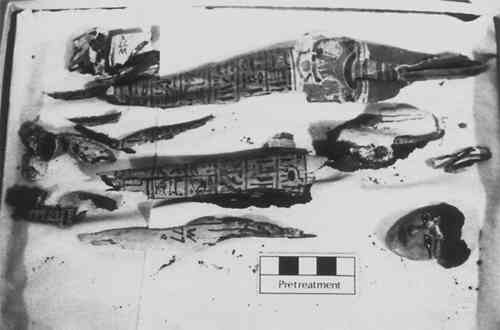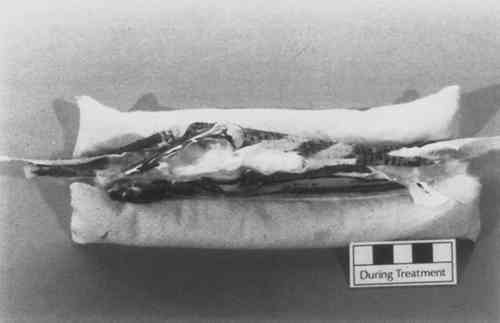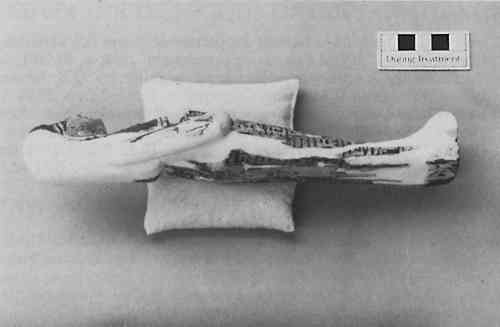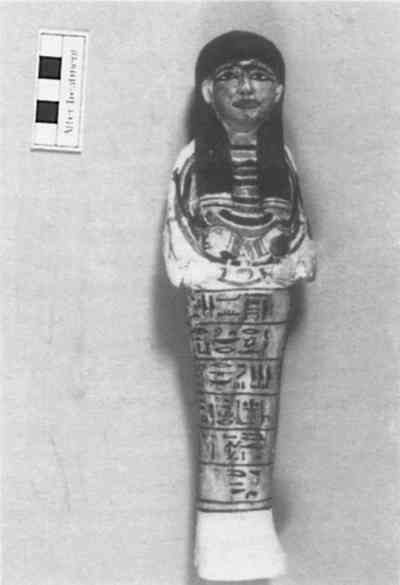NOTE ON A FILL MATERIAL FOR WATER SENSITIVE OBJECTS
PAMELA HATCHFIELD
2 TREATMENT
FIGURES 1–4SHOW THE USE of 3M's lightest grade C15/250 microspheres as a fill material for the reconstruction of a New Kingdom Egyptian polychromed wood shawabti, a burial figure, which had been severely damaged by termites. (Fig. 1). Wood and painted surfaces were fragmentary but generally in good condition. Where the wood substrate had been almost completely eaten away, local consolidation of the painted surface was done with Acryloid B-72 3% in toluene. Joins were adhered with polyvinyl acetate resin AYAF 20% in acetone, or with B-72 50% in acetone. Some joins required a facing support of Tengujo tissue.5
Fig. 1.
Polychromed wood shawabti before treatment.
 |
Fig. 2.
The partially assembled shawabti is being filled with B-72 and microspheres after lining of voids with Tengujo.
 |
Fig. 3.
After filling losses and shaping missing parts.
 |
Fig. 4.
After inpainting.
 |
Large voids and unsupported surface pieces required a strong, lightweight fill material which would not affect water-sensitive gesso or painted surfaces, and not be absorbed into porous materials, possibly resulting in ghosting. Due to the fragile nature of the damaged wood and its limited capability to support surviving surface fragments, an easily reversible fill material was required to allow positioning and repositioning of fragments as required during reconstruction. More traditional wood fillers such as plaster or water-based cellulosicor vinylic fillers seemed inappropriate in light of the above requirements.
Voids in the figure were lined with Tengujo tissue and B-72 15% in acetone. Equal volumes of the same resin or 15% in acetone/ethanol 1:1 and 3M C15/250 microspheres were mixed to form a thick but pourable fill material which was built up in layers. (Fig. 2). Fills were found to be easily built up, strong, lightweight, and easily shaped by sanding, carving, or application of appropriate solvents. (Figs. 3, 4). Fills may be inpainted with water-based acrylics such as Liquitex, or with watercolors.
|



